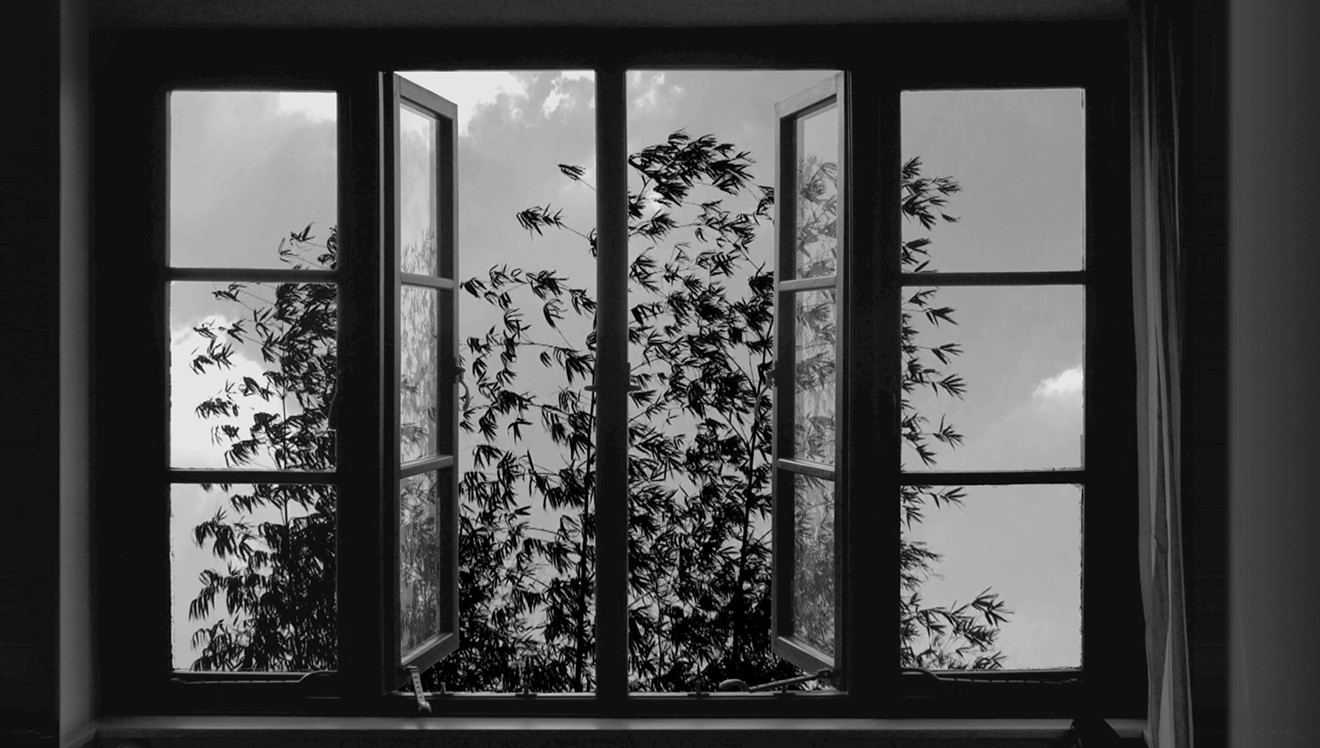Some dead filmmakers we miss not for the emotional delivery systems they can no longer manufacture, but for their company, sweet and simple. Abbas Kiarostami, the great, modest Gandalf of the Iranian New Wave, didn’t make works so much as have conversations with your forebrain, and his thoughtful chitchat was always sly, generous, elastic and humane. You didn’t need a more complicated or hipper reason to be his devoted viewer and to think he was, for a few decades, the great living film artist.
About a year and a half after his death, here comes what might be his last vestigial launch into the void, a feature that can be thought of as an experiment with time, an ambient essay on the act of watching, an attempt to entirely Buddhist-ize digital cinema. Or, if you’re an impatient philistine, you might think of it as 24 of the greatest screensavers ever crafted. (It’s indicative of the man’s catholic approach to life and art that he’d have probably embraced such a slam, and said, sure, why not.) 24 Frames won’t create any new Kiarostamians, but it will be a salve for those of us who wanted to sit beside him one more time, following his gaze.
It is what it says it is — 24 "frames," images digitally extrapolated out into 4 1/2-minute unconnected, unmoving set-piece shots. Sometimes an image is cadged from an outside source — No. 1 is Pieter Bruegel’s "The Hunters in the Snow," augmented with actively falling snow, live crows and dogs, and chimney smoke. Most often, they’re beautiful natural images, of beaches and snowy landscapes, occupied by birds, cows, deer or wolves, all listening to the wind and tending to their private business. No. 2 watches two wild horses court in the snow through an open car window. No. 10 watches sheep huddling headfirst around a tree in another snowstorm, a herd dog dozing beside them, with wolves showing up in the distance as we fade to black.
The beaches — reminiscent of Kiarostami’s Five (2003) — are pensive mini-dramas of battling gulls, ducks separated by fences, roaming cows. We gaze through a variety of windows and hunker down in many different winter forests. Sometimes there is music — a tango, a blast of opera — and sometimes only the trees and waves. Animals get shot by unseen hunters, while others roam in real time, searching for lost mates. Each micro-movie is its own koan.
Of course, not all is as it seems. Kiarostami’s idea of what cinema is, at least from Close-Up (1990) on, was always quantum. Our relationship to the narrative or visual data in his films is always unstable, and what seems "real" is often not, even if it isn’t quite "fake." And is there a crucial difference, in the end? The hold-your-breath wildlife of 24 Frames is both genuine — the beasts seem mostly, if not entirely, real — and completely contrived, set digitally into sometimes painterly landscapes and layered from unconnected materials. Even the barely detectable rising of light in the sky may be engineered in post. Each tableau is rich with tension, between narrative and nothingness, control and wildness, spontaneous animal behavior and CGI invention, what is seen in the frame and what occurs off-screen, the simple act of seeing and Kiarostami’s gentle suggestions of meaning. You can even catch the occasional digital seam and glitchy movement — which only makes the entire project feel more artisanal.
Motifs present themselves — almost all of the segments are haunted by irritable crows, something like the film’s psychopomp, and many scenarios are fraught with the anxiety of coupling and separated partnerhood, sexual and otherwise. Humanity, strangely enough for this director, is barely there.
What’s also ironic is Kiarostami’s oft-stated desire to eliminate himself from the filmmaking process — leading to films like 10 (2002), shot entirely without his presence, and to a general wish to see accident, nature and duplicity pile up in a way that obscures his authorial role. But this curious off-camera personality is itself a fascinating, secret-weapon artistic stance — it is indeed why we watch. Free as it may seem to be of explicit intention or auteurist maneuver, 24 Frames is as explicitly an expression of his will to frame the world as anything he’d made. We like cows and crows and snow, but it’s Kiarostami’s phenomenological presence that somehow turns every image or camera posture into a question about living, seeing, empathy and essence. Much of this feels like moments of ultimate reckoning, but only in the end, in shot No. 24, with a classic-film quote and a hint of sunrise, does the film literally bid us, and cinema, adieu.
[
{
"name": "Air - MediumRectangle - Inline Content - Mobile Display Size",
"component": "19274298",
"insertPoint": "2",
"requiredCountToDisplay": "2"
},{
"name": "Editor Picks",
"component": "17482312",
"insertPoint": "4",
"requiredCountToDisplay": "1"
},{
"name": "Inline Links",
"component": "18711090",
"insertPoint": "8th",
"startingPoint": 8,
"requiredCountToDisplay": "7",
"maxInsertions": 25
},{
"name": "Air - MediumRectangle - Combo - Inline Content",
"component": "17482310",
"insertPoint": "8th",
"startingPoint": 8,
"requiredCountToDisplay": "7",
"maxInsertions": 25
},{
"name": "Inline Links",
"component": "18711090",
"insertPoint": "8th",
"startingPoint": 12,
"requiredCountToDisplay": "11",
"maxInsertions": 25
},{
"name": "Air - Leaderboard Tower - Combo - Inline Content",
"component": "17482313",
"insertPoint": "8th",
"startingPoint": 12,
"requiredCountToDisplay": "11",
"maxInsertions": 25
}
]











